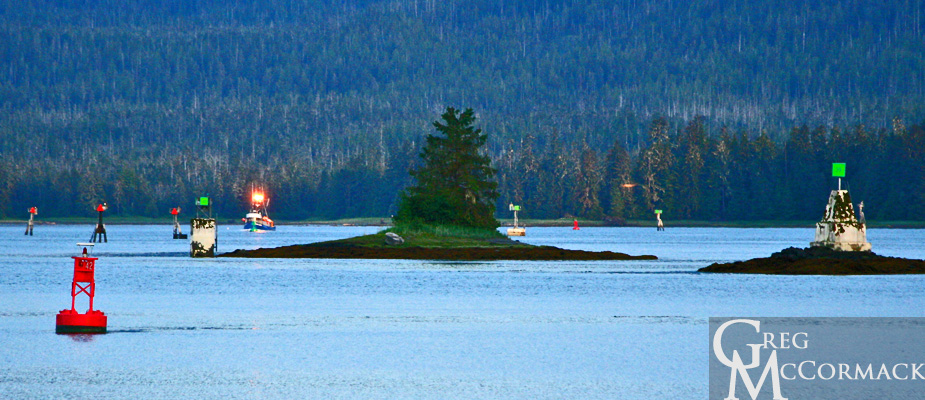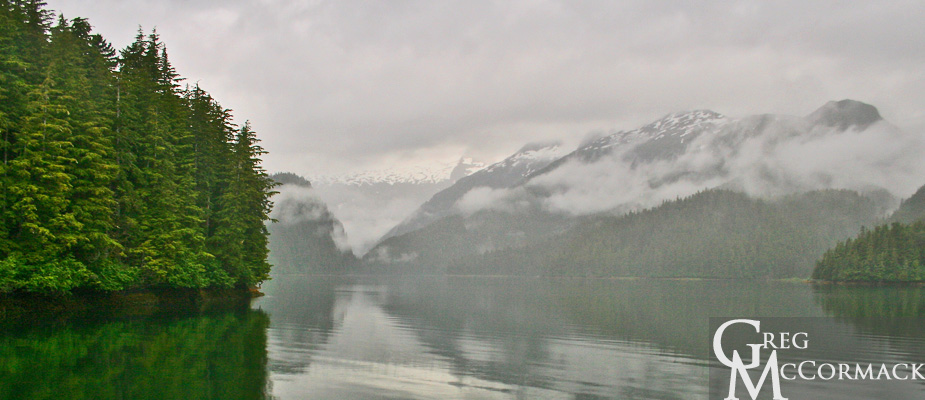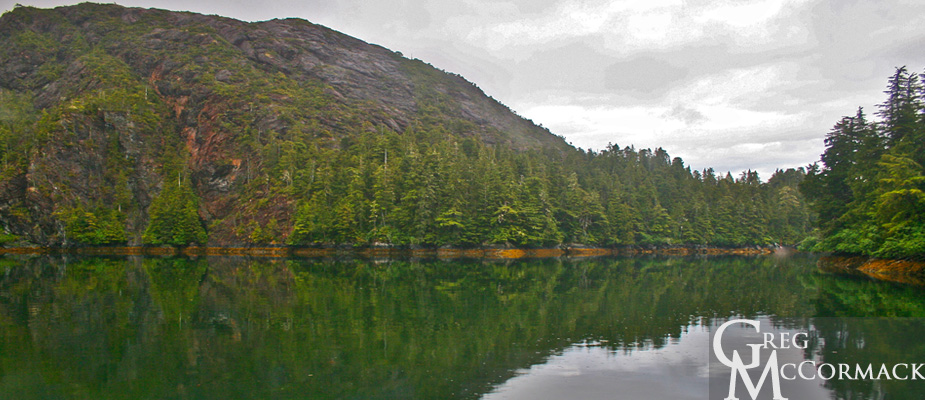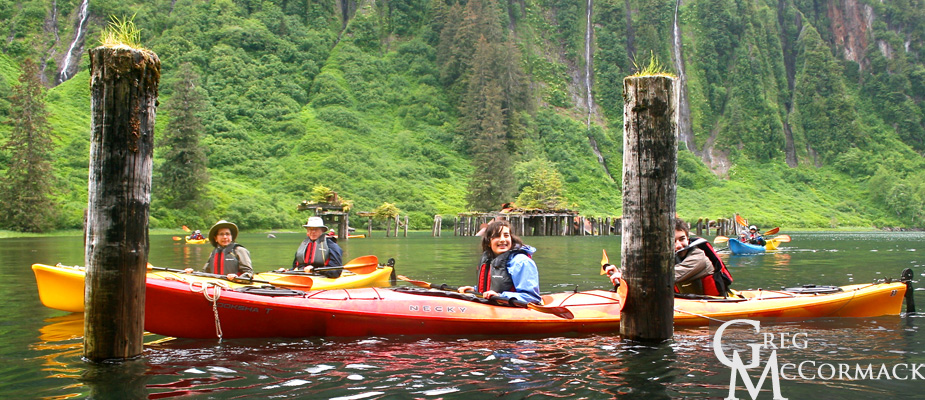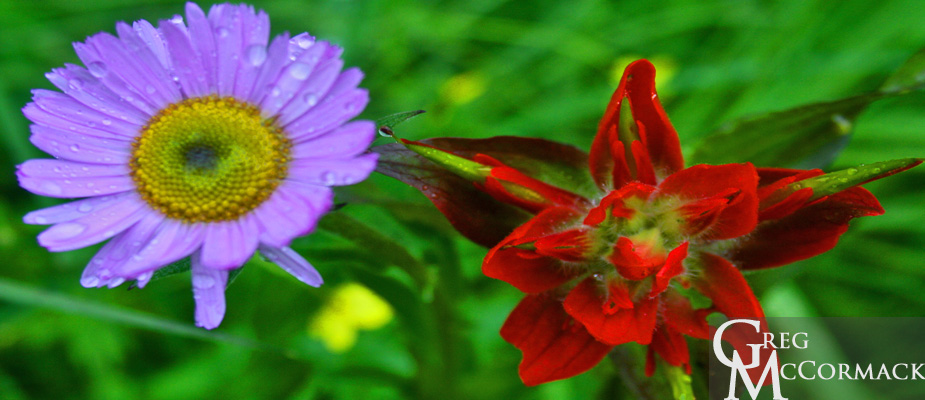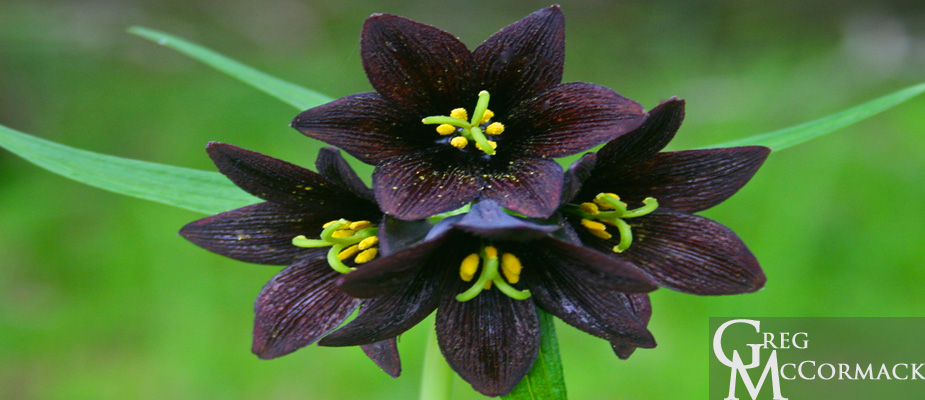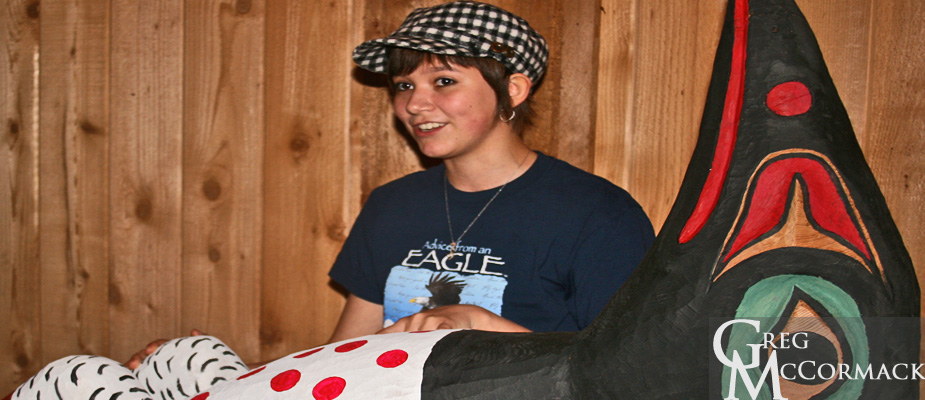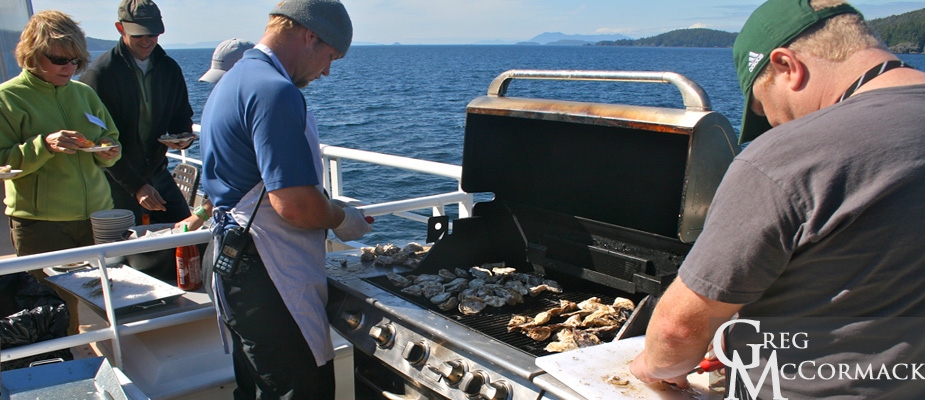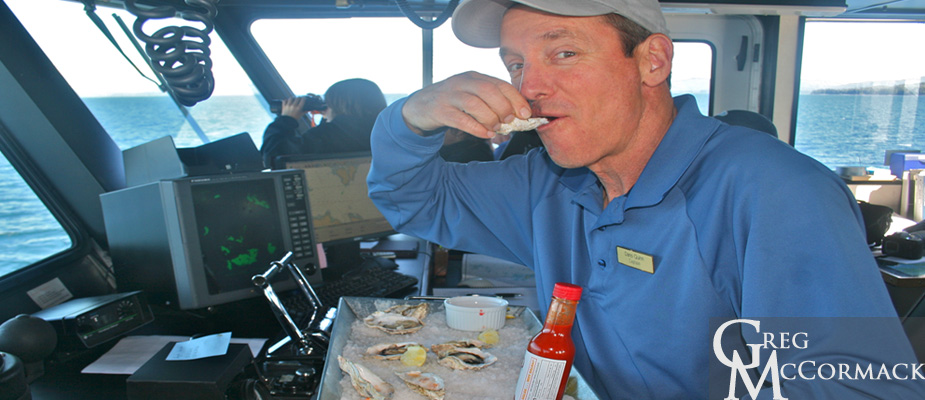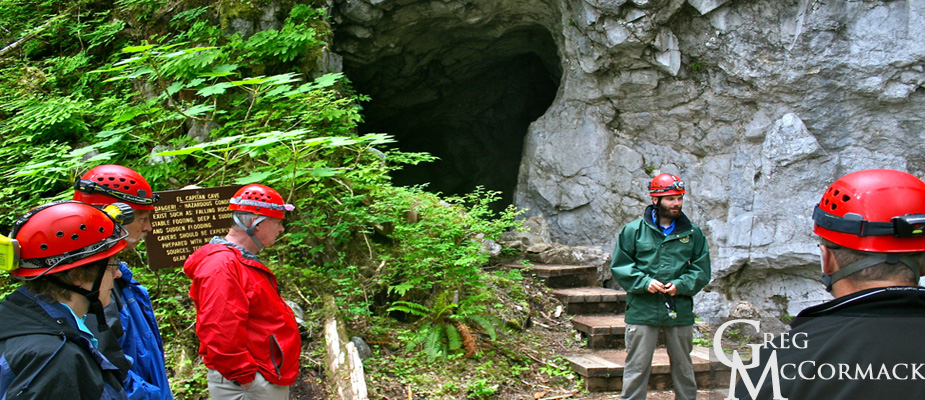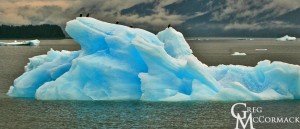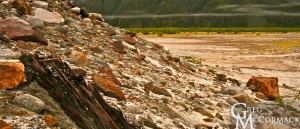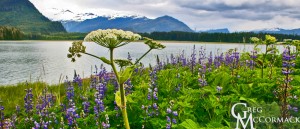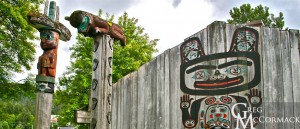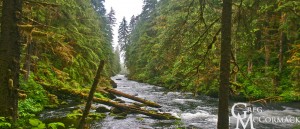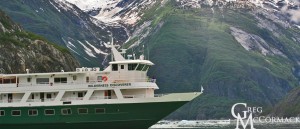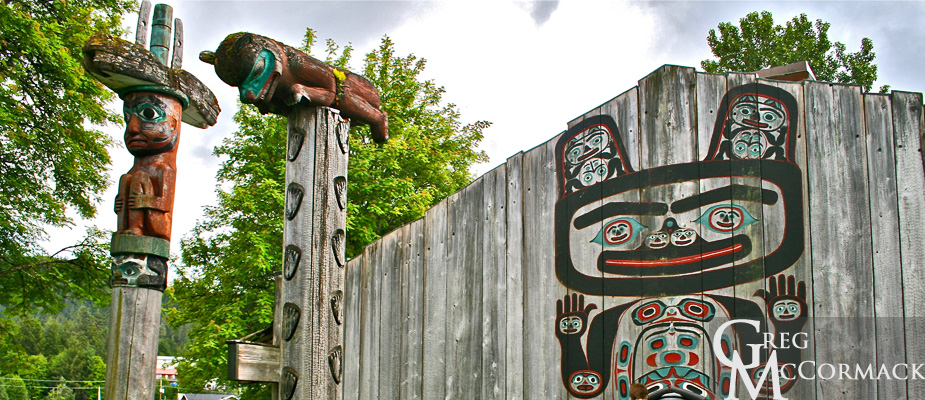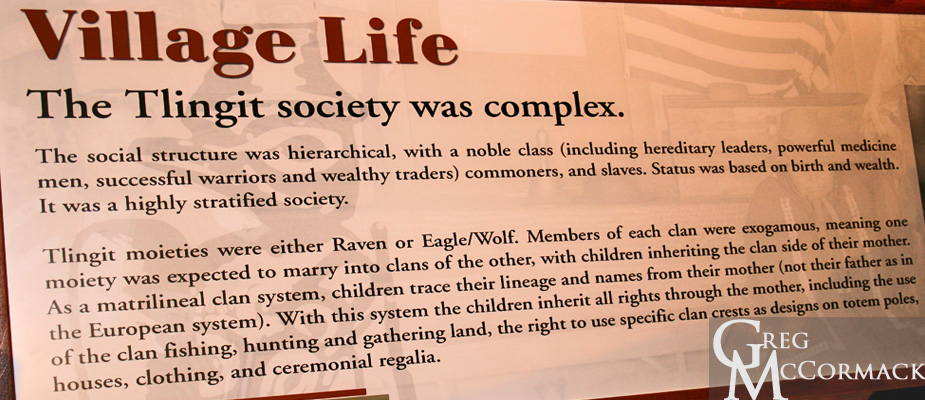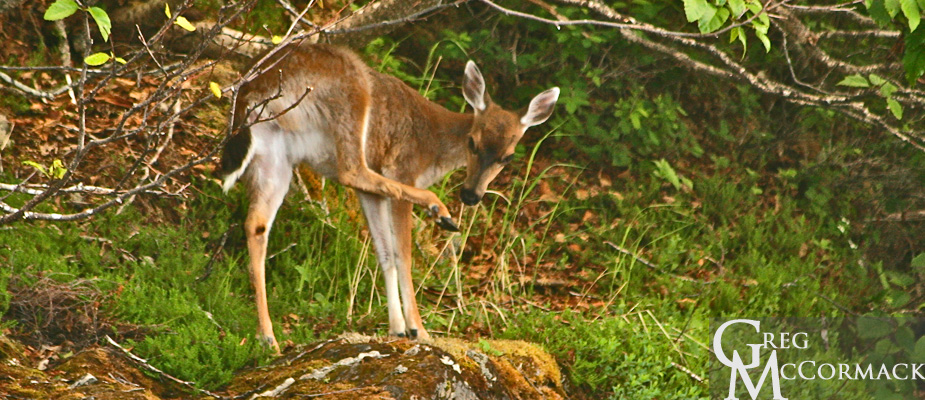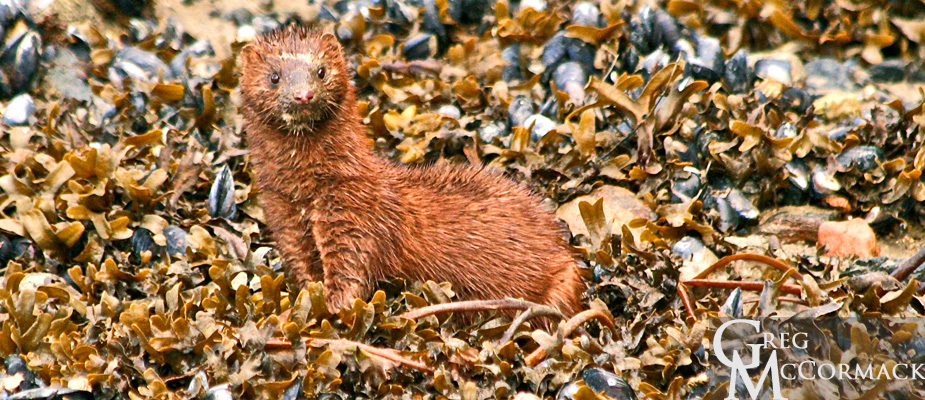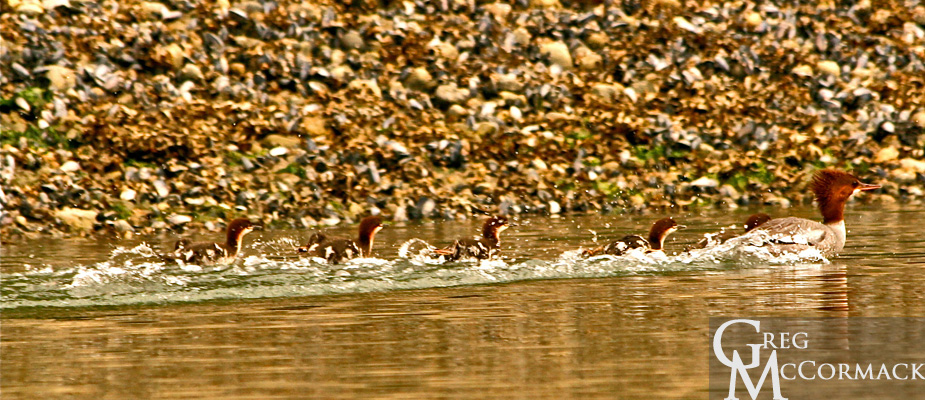Wednesday | June 29th
September 10, 2011 by admin
Filed under InnerSea Discoveries
Patterson Bay: Scat and Cataracts!
Wake up to the sound of heavy rain and the euphonious waterfalls that surround our anchored vessel.
As you might say in Spanish: Que lastima! Esta lloviendo (what a pity that it’s raining). But here’s my saying for the day: “Whether the weather is wet or whether the weather is dry…whatever the weather we’ll weather the weather, whether we like it or not.” I should add: “There is no such thing as bad weather…there is only inappropriate gear.”
It’s easy to think that the inclement weather will continue for days, if not weeks, since there isn’t any sign of a “blue-hole” or patch of blue in the sky. Positive thinking really helps and it’s encouraging to see gung-ho guests ready to get out and brave the elements. We all know, of course, that “liquid sunshine” is what makes the temperate rainforest so lush and verdant! If we get a bit cold, we can all get in the hot tubs after our days adventures!
Today I lead two separate groups through dense vegetation to a well-hidden and spectacular waterfall.
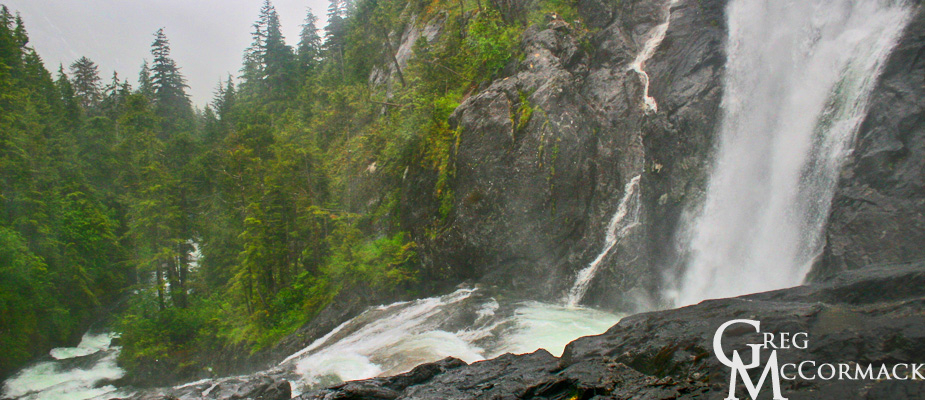
I have to yell “HEY BEAR” while pushing through the tall salmonberry shrubs, alder thickets and Devils’ Club plants to alert any sleeping grizzly bears. The guests follow me as I crawl under and on top of giant, fallen trees. We are sopping wet within 100 yards of penetration but all have big grins on their faces. Why? Because this is as good as it gets for pure wilderness! After we step over our first of at least 10 large piles of brown bear scat, I pronounce: “Welcome to the food chain!”
In the lower 48 States (or anyplace in the world for that matter), it’s easy to take trails for granted. It isn’t until we get into the path-less woods that we can appreciate all the effort it takes to build and maintain a trail. Four legged mammals have the advantage of ducking under massive fallen trees while looking for the least difficult way through an ecosystem to find food, water and shelter.
I shoot some video of our hiking group pushing through the wet vegetation and into the shallow river where it is easier to navigate.
In the late afternoon, our captain decides to motor into another of the spectacular fiords on the southeast side of Baranof.
The scenery is mesmerizing at just a few knots per hour and many are quiet and contemplative on our journey up to a waterfall and a view of a brown bear.
Tuesday | June 28th
September 9, 2011 by admin
Filed under InnerSea Discoveries
Last night some were worried about a potential rough crossing to arrive at South Baranof across Chatham Strait. Some folks complained of being sea-sick while others enjoyed the rocking and rolling that lulled them to sleep in the berths of their cabins.
Several activities are offered to our guests. I enjoy being the all-day kayak guide.
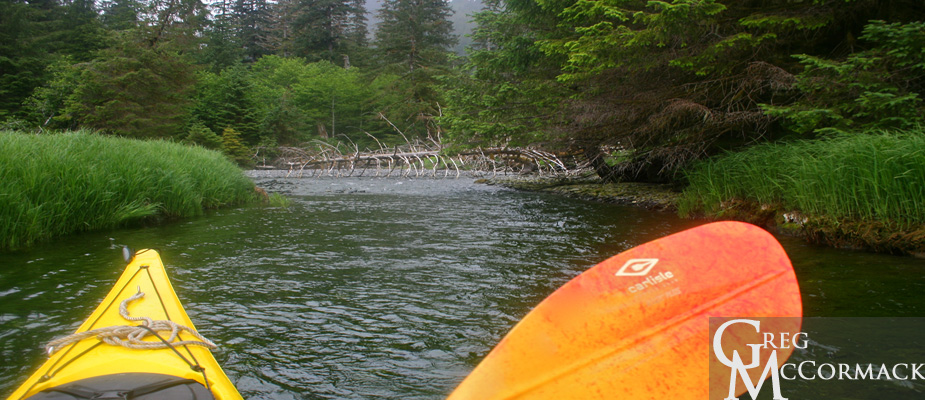
We enjoy a paddle along the south side of the fiord to an old herring rendering plant.
Stop to play at a waterfall located adjacent to some old rusty tanks.
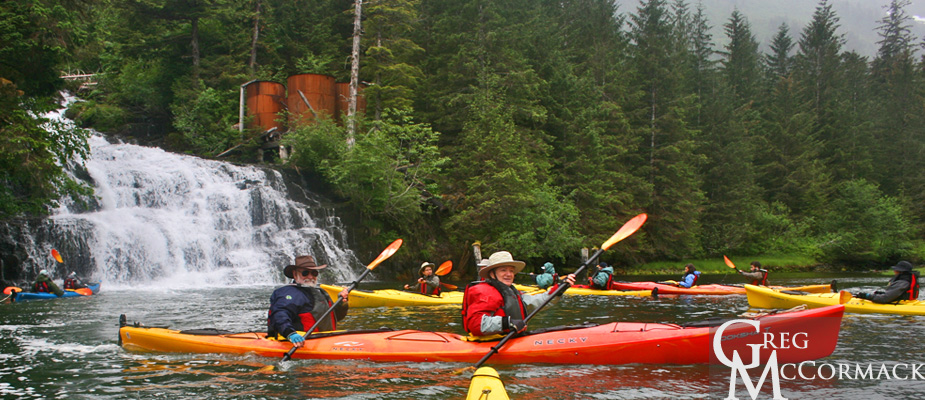
We continue to a place named “Lovers Cove” and are able to paddle up a magnificent little river that has “perfect salmon spawning habitat” written all over it. A large, fallen snag stands with branches akimbo across the riffle area where we have to turn-around.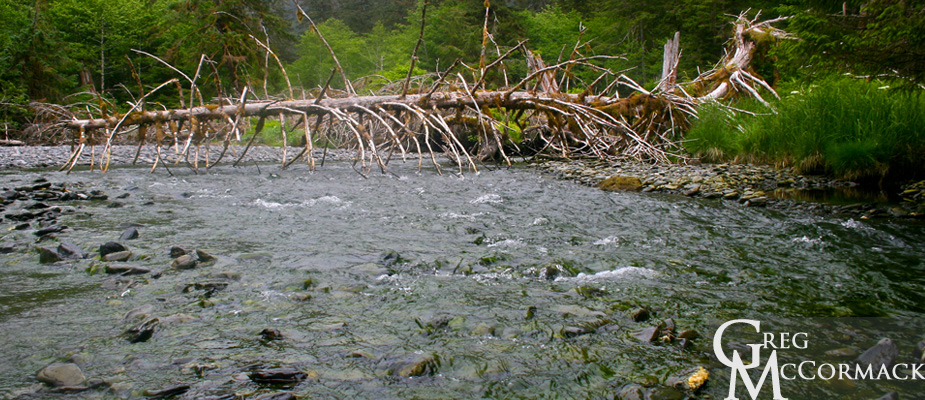
Later, the strongest of the paddlers continue to another inlet that houses the Little Port Walter station of the National Oceanic and Atmospheric Administration. When we arrive to the dock, I noticed what I thought was a funny-looking sea otter swimming from where we had just paddled. A fish biologist, who has a better view, tells us the swimming mammal is a bear. We immediately turn around as quickly as we could and enjoy watching it shake the excess water off of its back before disappearing into the forest.
On the opposite shore we make a micturition stop with an opportunity to stretch our legs. We spot some pretty wildflowers, including daisy, paintbrush and chocolate lily.
We each carry-out a few marine debris items that were strewn up in the beach wrack zone. I take a group photo of everyone holding their most interesting finds, including a hagfish trap, oyster spacers for aquaculture, plastic bottles and a small fish net. I take the opportunity to describe the issues surrounding marine debris and derelict fishing gear and the impacts on marine wildlife.
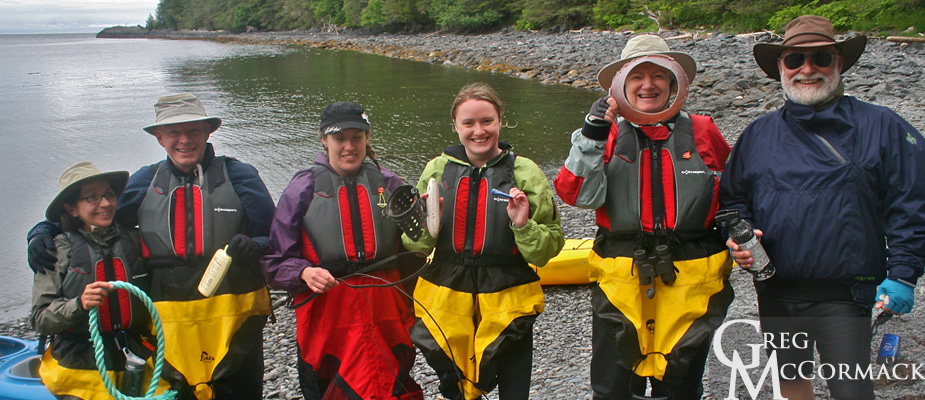
Back aboard the M/V Wilderness Discoverer, the youngsters enjoy a simulated “campfire” adjacent to a pitched tent in the lounge. The kids ensconced themselves on the pads and wrapped themselves up in the sleeping bags and ate bags of microwaved popcorn.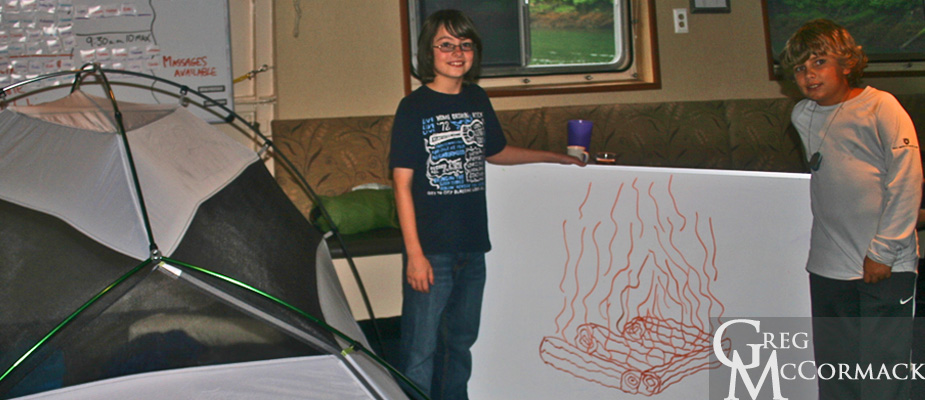
Monday | June 27th
September 9, 2011 by admin
Filed under InnerSea Discoveries
Klawock and Sea Otter Sound
We enjoy sunny skies as we disembark at the docks in Klawock and assemble on the pier for a walking tour. Les our guide tells stories his father told him about signs being put out in the streets that said: “No Dogs or Indians Allowed”. He went on to describe the beginning of the Alaska Native Brotherhood.
I drift into reverie and can’t help but think of the audacity of the first Europeans when they arrived in North America by asking the natives: “Where is your flag? You don’t have one? We claim this land for the Queen of England!”
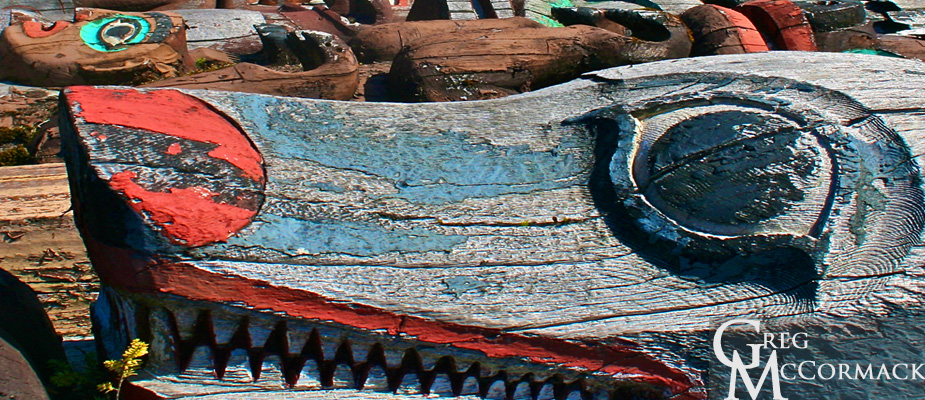
We approach the oldest cannery in Southeast Alaska and Les tells us about how thick the fish returns used to be. Behind the cannery about 2 miles away we can see a large paper/pulp mill. Les tells us that countless logs are shipped overseas from Prince of Wales Island to the Far East. Apparently, the mill is owned by the same family that runs the mill in my home-state of Washington at Port Townsend. 30 employees are employed at the POW site near Klawock.
For the birders in the group, we are entertained by the behavior and vocalizations of around two dozens species, the loudest of which is the song sparrow, orange-crowned warblers, winter wren and common raven. The call of the bald eagle “wowed” some folks. Film-makers in Hollywood seem to always play a recording of a red-shouldered hawk in place of the real eagle vocalization. Perhaps the real eagle call is un-regal?
The view of the river estuary with the backdrop of the snow-capped mountains was appreciated by all as we walked a mile to the carving shed from the totem park.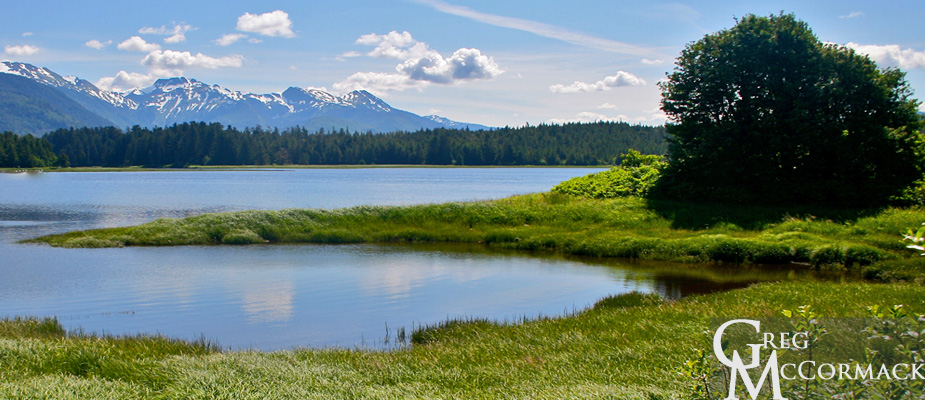
For those of us crew that make it here twice per month, we were amazed at how much progress has been made on the totems that will be erected in early August during a three-day festival. Accompanying Les is young apprentice James Mills, who has contributed his advanced carving skills to the community of Klawock. Everyone enjoys the carving shed where we meet Master Carver Jon Rowan Jr., the main carver of poles and overseer of the project. Sydney, niece of Les, has done a marvelous job of painting the totems, particularly the Naasteidi Flicker totem pole that has the red polka dots.
We get back underway at lunchtime and enjoy a mid-afternoon party on the Sun Deck. The central focus is our over-sized BBQ grill. Passengers and crew crowd around where we shuck and roast oysters that we picked-up yesterday from our oyster-farming friends in El Capitan Passage.
Captain Dano Quinn is busy on the bridge watching for whales but he enjoys the flavors of our shellfish with hot sauce!
Captain Dano surprises us later in the afternoon with an offering of small boat tours to a miniature archipelago of islands in Sea Otter Sound. The lighting for sunset is warm and perfect for pictures. As usual, a parade of interesting plankton flowed beneath the ship, including jellyfish and a pelagic mollusk.
Sunday | June 26th
September 9, 2011 by admin
Filed under InnerSea Discoveries
El Capitan Passage, Caves and Oyster Pick-up
I lead a couple of groups along the U.S. Forest Service trail to the caves. This is a great area to explain the hallmarks of a temperate rainforest, such as the presence of Sitka spruce, nurse logs, a profusion of mosses and ephiphytes, among others. We look at signs of a second growth forest such as trees of the same age and height class that grow so thick that sunlight cannot penetrate the canopy to reach the forest floor. The lack of sunlight leads to a paucity of herbaceous and shrubby plants that provide habitat or browse for herbivores such as deer.
It is obvious when we make the transition into an old growth forest. We notice lots of shrubs such as the false azalea, blueberry, and devils club along with ferns and their allies. Trees are of different age and height classes leading to a multi-layered canopy. Some of the trees are too large to hug with a diameter-at-breast-height or DBH of 30-inches. Nurse logs and snags are abundant, on the order of dozens per acre.
Old growth forests of several hundred years or more have a certain spacing between trees, perhaps 20 feet between each large tree, encompassing up to 400-600 trees per acre. In comparison, a second-growth forest will have several thousand trees per acre. Spacing is mere inches or only a few feet between each tree, leading to the lack of understory and little habitat for forest-dwellers. 95% of the forests in the lower-48 have been cut.
During the decades of the 60’s to 90’s, foresters bragged about more trees growing in America than at any point in our history. That is a true statement, but what is not mentioned is that the Department of Agriculture manages trees like crops and often have a mono-culture of single-species plots, leading to a much less bio-diverse ecosystem. Species such as the marbled murrelet and spotted owl were listed as threatened or endangered of extinction. Court injunctions followed and tough times for loggers because the industry saw it cheaper to ship raw logs and jobs overseas. Management strategies and forestry practices have changed for the better…
I spot a family of woodpeckers nesting in a large snag. The sapsuckers were busy flying to and fro to feed the noisy young inside of the tree. The sallying forth for arthropods such as flies and moths was entertaining as we rested to catch our breath about half-way up the 367 stairs.
At the El Capitan Caves, we are greeted by two National Forest Service rangers.
We learn about speleothems or stalactites and stalagmites and how they are formed. A graphic was passed around with the chemical equation for the process: Ca2 + 2HCO3 CO2 + CaCO3 + H2O.
A popular shot for photographers is the sign at the entrance to the caves. It reads: “EL CAPITAN CAVE. Danger! Hazardous conditions exist such as falling rocks, unstable footing, deep and sudden pits and sudden flooding. Cavers should be experienced and prepared with numerous light sources, technical climbing gear and survival gear.”

Our National Forest Service guides pass around some interesting photographs HERE
Saturday | June 25th
September 9, 2011 by admin
Filed under InnerSea Discoveries
We lift anchor at 0600 and motor a few nautical miles to Ketchikan for disembarkation at 0830. We bid a fond farewell to our old friends and shipmates. It has been a week-long voyage but when we recollect all of the memories, it seems as if we were together for a much longer period of time. We have experienced so much with all of our senses.

After a long and hard push to clean the ship from top to bottom, we wait for our new passenger friends and shipmates to board the M/V Wilderness Discoverer at 1630 hours.
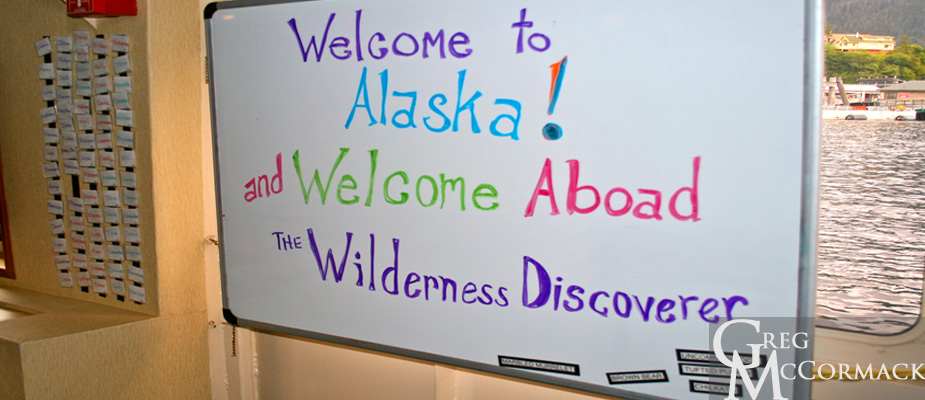
All of us take turns to show guests to their cabins. We meet folks in the lounge for appetizers and “welcome aboard” drinks.
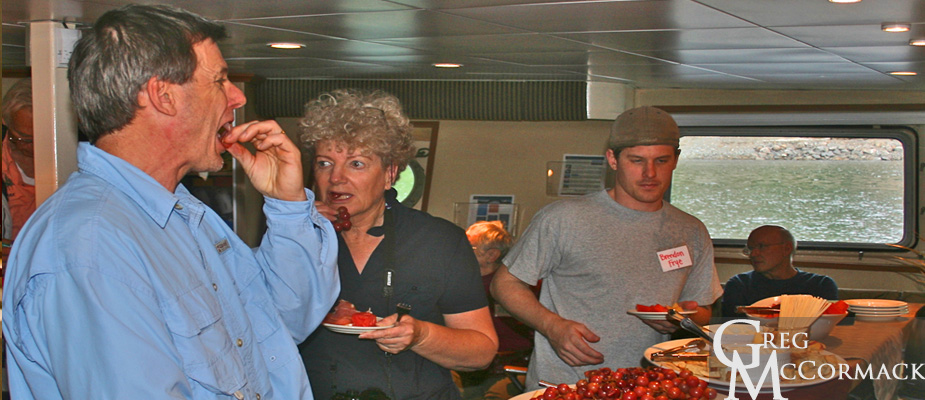
The captain, expedition leader, chief engineer and hotel manager each give a brief introduction to ship-living. We are on our way north up and around Prince of Wales Island.
This evening several of our guest passengers assemble in the lounge and play music. Friends are made rapidly and much merriment ensues.There are suggestions that our company buy some instruments for the vessels night entertainment, such as a Latin percussion box drum and a mid-level guitar, such as a Yamaha or “Ibanez”. Why not add tambourines, shakers with rice, recorders, etc?

Too much fun at night might lead to some weary adventure-seekers during the daytime, so let’s get some rest!
Where is gMack now? InnerSea Discoveries Expedition Week 8
It has been an exciting week on the InnerSea Discoveries Expedition Click Links Below to read daily updates from Week 8 of the Trip:
June 19-24th, 2011
Sunday | June 19th
Terns and Eagles On Ice!
Monday | June 20th
Ice, Ice, Baby!
Tuesday | June 21st
Happy Summer Solstice, Everybody!
Wednesday | June 22nd
Chief Shakes Tribal House & Nolan Center Museum
Thursday |June 23rd
“INTO THE SUBLIME”
Friday | June 24th
A Misty Day in Misty Fiords National Monument
Friday | June 24
August 8, 2011 by admin
Filed under InnerSea Discoveries
A misty day in Misty Fiords National Monument

As we circumnavigate Revillagigedo Island, it is evident that we are in a temperate rainforest. The clouds create wreaths around each and every mountain. Some clouds rise up like the fumaroles of the geothermal vent area in Yellowstone National Park. Eagles are omnipresent on tree tops and snags, awaiting an opportunity to capture an unsuspecting fish just below the surface of the fiords.
Thursday | June 23
August 8, 2011 by admin
Filed under InnerSea Discoveries
YES BAY
“INTO THE SUBLIME”
Rainy day in the upper reaches of Yes Bay. In the morning, I lead a rainforest walk described as a “fast, technical hike”. We land at the dock of the Yes Bay Lodge, a comfortable fishing lodge with beautiful cabins overlooking the bay and Wolverine River.
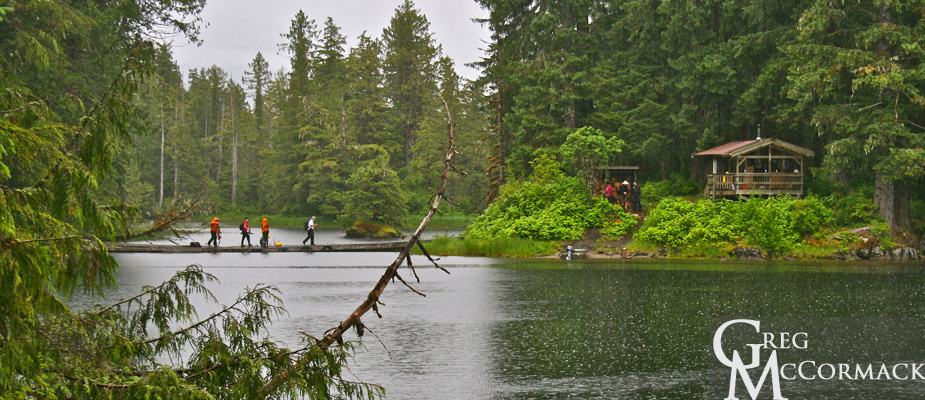
We follow the river about 1.5 miles up to McDonald Lake where a forest service cabin lies on a tiny island. All of us are sopping wet from the overhanging vegetation and have mud covering our shoes, but we are happy to be in the verdant riparian corridor.
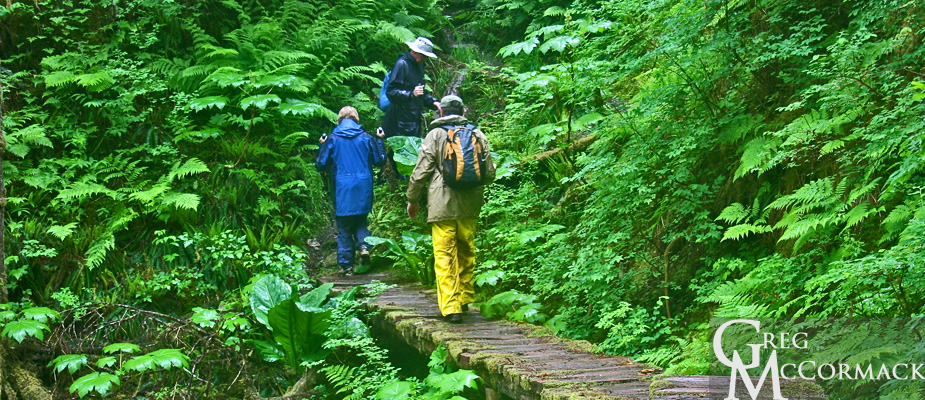
The trail is actually quite technical with lots of slippery roots and rocks, turns and short climbs up and down along the river.
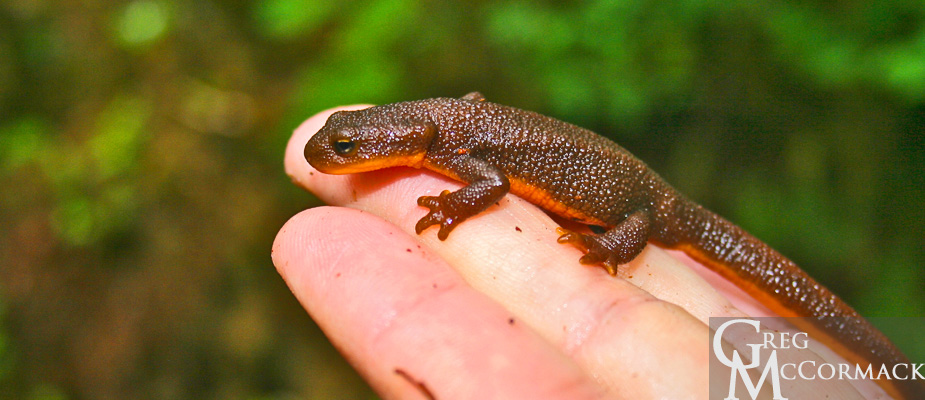
We finally arrive at Lake McDonald and meet some folks renting the Forest Service cabin. They travelled from the draught-ridden state of Texas. They love the verdant countryside and the excellent fishing opportunities. We also meet a couple of forest service rangers that have orange inflatable kayaks for patrolling the shoreline.
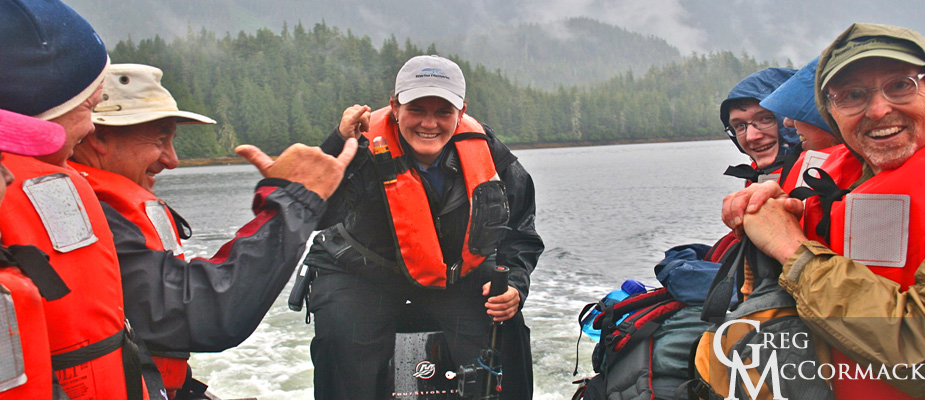
On our way back, we pass a couple of fly fisherman and later at the dock, see deep-sea fisherman returning with King Salmon, lingcod, greenling, rockfish and halibut. Many guests at the lodge do catch and release, but several pay the significant cost of shipping ($250, minimum) the fish home.
In the afternoon, I lead four guests on a quiet kayak up the fiord. The only sound is paddle strokes, the occasional cry of an eagle or call of a thrush. The water is as smooth as glass, except for the tiny concentric circles that emanate from the light, falling rain. This is as close as one can get to perfection…for entering into the sublime—the heart of the Wilderness.
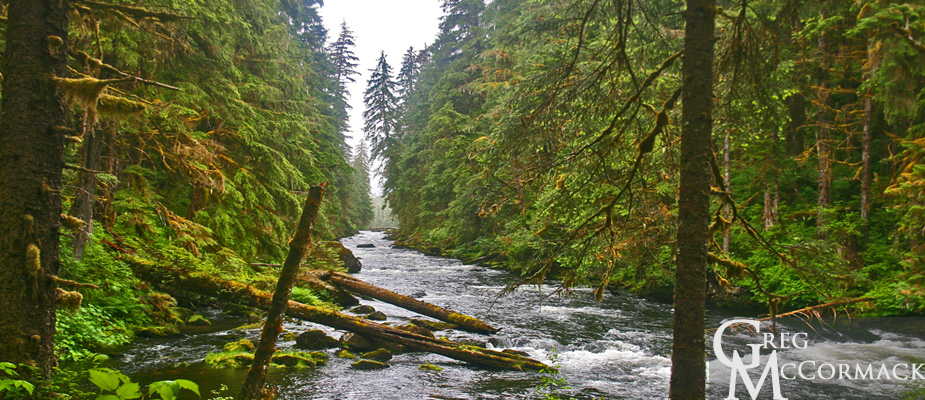
Late in the evening, we send off more than a half dozen double kayaks and 4 stand-up paddleboarders for an after-dinner paddle. The steady drizzle did not deter anyone today, nor did it dampen the spirit of the gung-ho snorkelers. The twin hot tubs on the back of the 300 deck were in full use throughout the day and evening.
Wednesday | June 22
August 8, 2011 by admin
Filed under InnerSea Discoveries
Wrangell is a good day for us guides. Our usual 12 to 14-hour day is cut down to only 10 or so hours. We work on projects and accompany guests on walking tours. We enjoy two hours of our own time in town to visit a coffee shop or a trip to the library.
My favorite spot is a toss-up between Chief Shakes Tribal House or the Nolan Center Museum. I get great vibes from the totem poles and absolutely love the performance by singers and dancers at the tribal house.
The Nolan Center is where I can duck my head into the bookstore and peruse good books and interact with visitors and staff.
Just after lunch, Luis and Justin, our chefs, have a fine time cleaning two garbage cans worth of Dungeness Crab on the dock below the main pier in Wrangell. We are excited about our dinner later tonight!
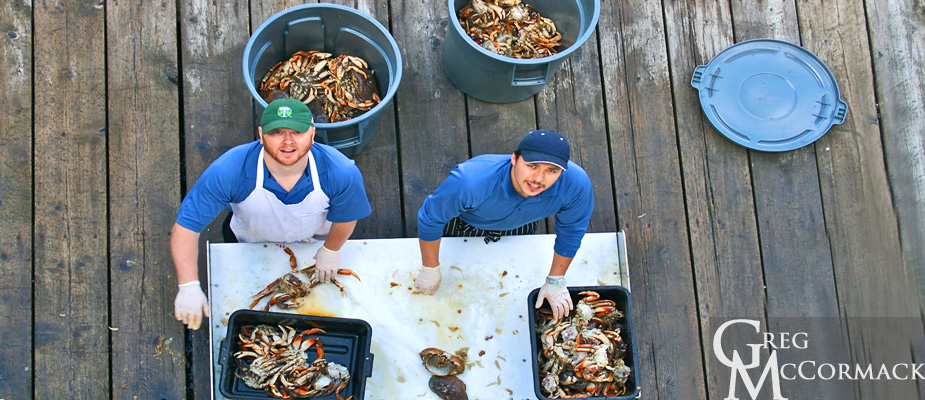
Kids in town sell garnets that come from a local spot in the mountains. The Boy Scouts and Girl Scouts benefit from the proceeds. It’s fun interacting with the kids that are hawking the garnets at the base of the pier.
Tonight it is Bar Trivia Quiz night w/ guides Kim and Megan. Most of the questions concern natural history facts. Some pertain to ship statistics such as: “How long is the vessel?” Answer: 170 feet.
“Geez”, I say to a fellow guest, “that sure is a small area to live in for 60 some odd passenger-guests and 26 crew.” That is 57 yards, the equivalent of a long field-goal in American football. We are 38 feet wide or almost 13 yards.
I start thinking of the size of my home. The crew quarters cabin I live in is 4 steps long by two steps wide. The bathroom or “head” is a place where if you put your arms akimbo, they hit walls no matter which way you turn. Sitting on the “royal throne”, shaving and showering can be done all at once…that way you don’t miss any wildlife or scenery highlights out on the decks!
Our maximum speed is not much more than 9 knots or 10mph…the speed of a bicyclist at a leisurely pace. We are anchored more than half the week, i.e. we are motoring about 10 hours or 100 miles a day. That’s less than 2 miles per day per passenger. The large cruise ships travel at least 18 hours a day and cover a much longer distance, from Seattle, Washington to Ketchikan, Sitka, Juneau, Glacier Bay and/or Skagway and all the way back down in 7 days. That’s close to 2000 nautical miles and at least 4 full days out of the week motoring 24/7.
Tuesday | June 21
August 8, 2011 by admin
Filed under InnerSea Discoveries
Happy Summer Solstice, Everybody!
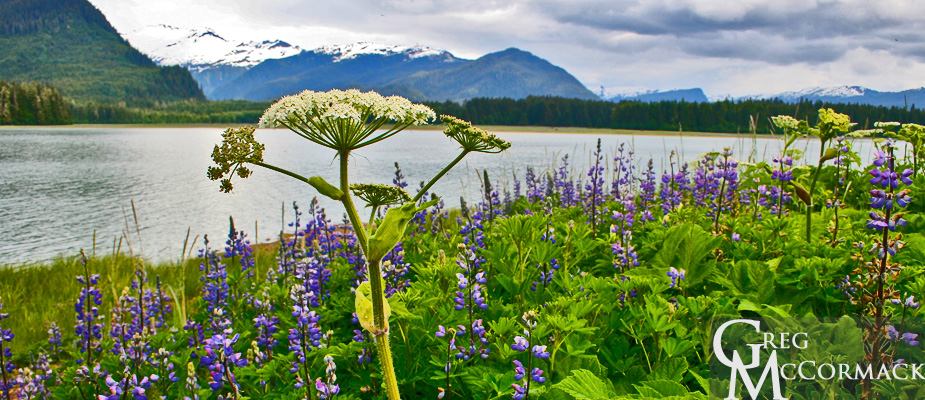
I am happy to be leading an all-day kayak trip with only 5 takers (hiking options are almost too good to pass up). We decide to circumnavigate Ruth Island in Thomas Bay. Thomas Bay is less than 15 miles northeast of Petersburg, Alaska.
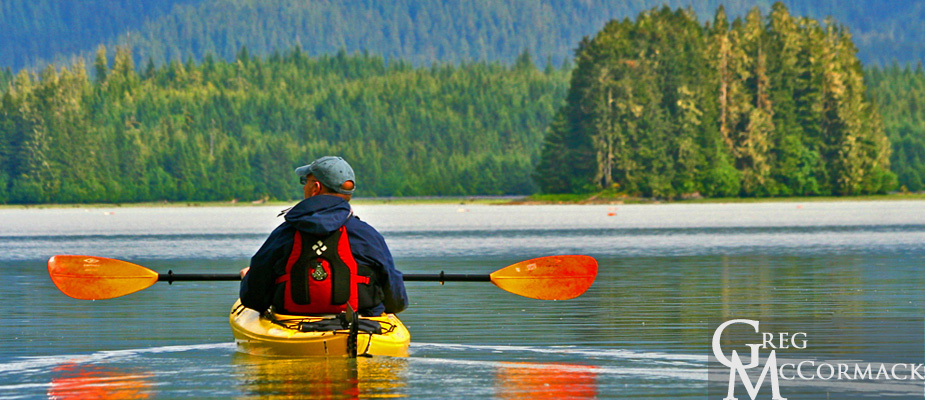
The paddling affords one with the most serene moments. For me, kayaking is a primal urge. It’s very representative of the ineffable nature of time. The present moment is occupied with movement. Your eyes and paddle strokes look toward a nearby or distant future. You get into a pace and try and maintain speed and direction toward a waypoint. Behind you a wake is left, ripples on an endless sea. Your path has been etched upon the canvass of your ever-evolving soul.
Indeed, a paddling trip in the Alaskan Wilderness is a most enriching experience that will fill you with a youthful vigor that will last a long time. Memories are made with each paddle stroke because all of our senses are engaged. Our blood is transporting carbohydrates and oxygen to our thirsty tissues. We are keen on finding the perfect stroke and pace. Is there any outdoor sport more ideal than kayaking?
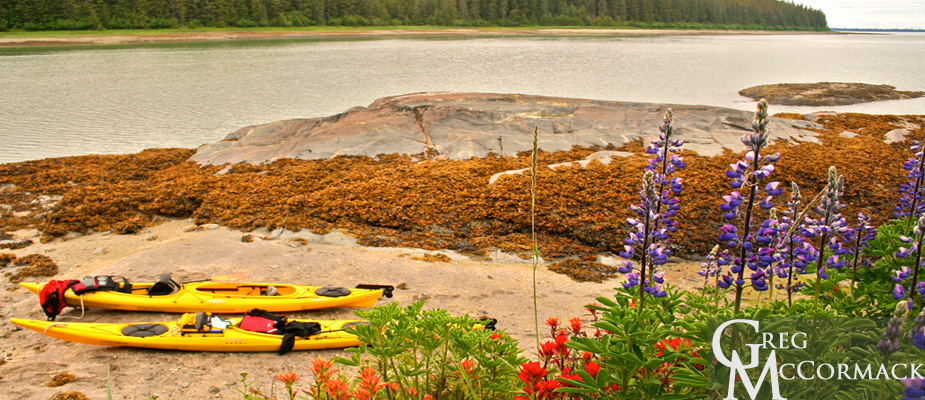
I give thanks for the Greenlander Inuit and the Aleuts for inventing the perfect craft 1000s’s of years ago.
We paddle in a counter-clockwise direction and have many highlights today.
We see Sitka black-tailed deer…
Not to mention a baby seal hauled out on rocks, moose scat, a bald eagles nest, family of merganser ducks, and fields of colorful flowers dancing in a breeze beneath a cerulean sky.
About half-way through our trip, I notice on my map a very narrow opening to what looks like a lake. It happens to be a marine lake that is accessible only at a high tide! However, we are not sure that we can make it through the very narrow passageway.
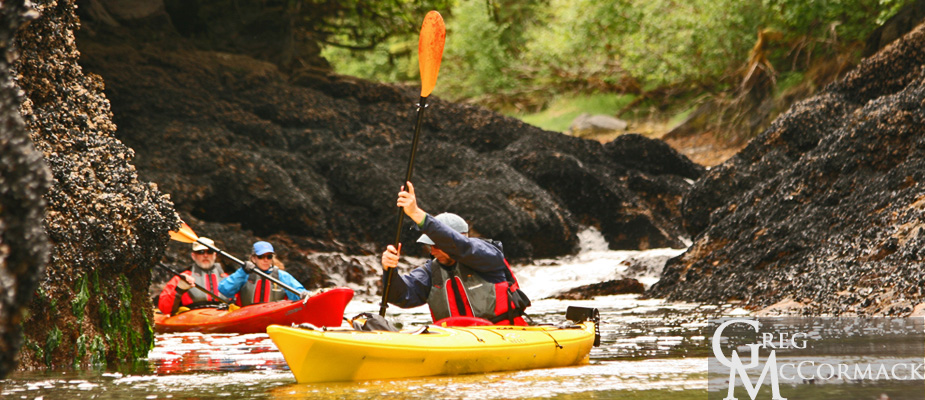
We paddle up and discover walls thick with mussels and a channel bottom covered with sea anemones.
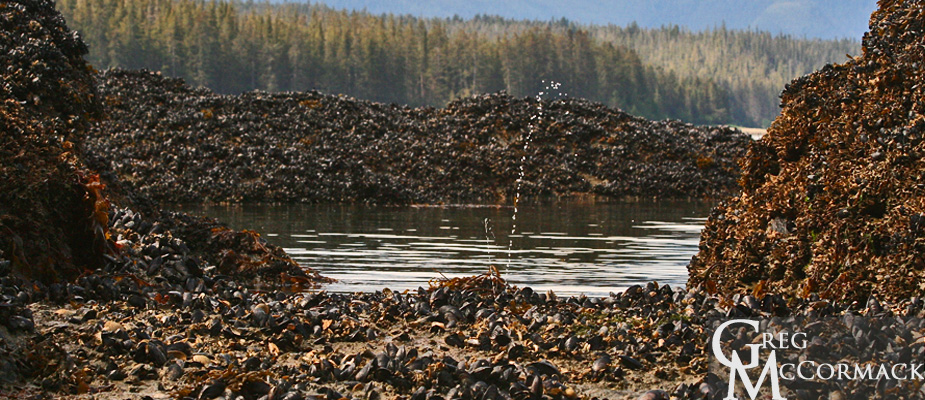
We park the kayaks on a mud beach nearby and are able to walk at the high-tide line to the 500 meter long lake. The rainforest around it is very lush.
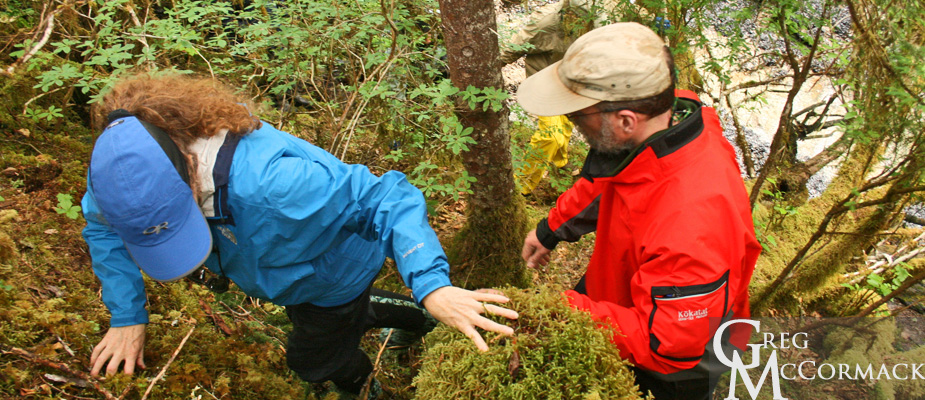
We name the lake “Silver” for our silver anniversary couple!
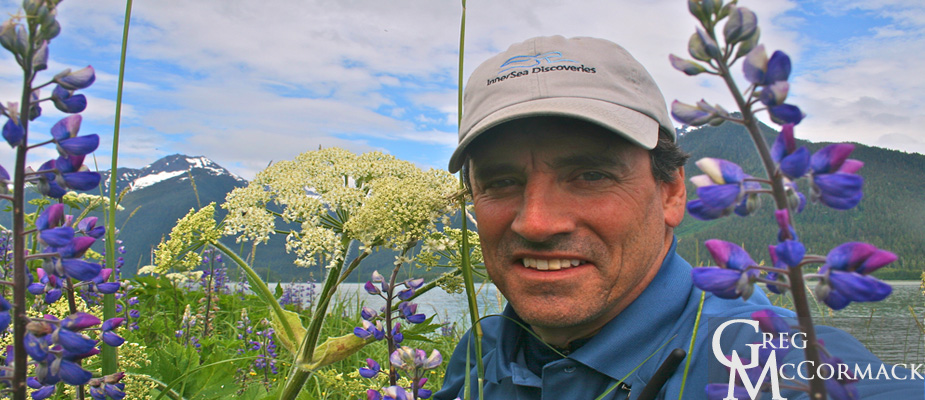
Back on the ship everyone is pumped-up from so many adventures to share with fellow shipmates. We lift anchor and motor past the town of Petersburg (population 3600) and enjoy the Summer Solstice sunset while transiting the Wrangell Narrows on our way to our anchorage near Wrangell.
